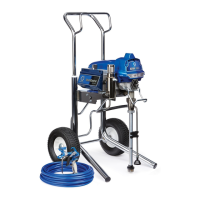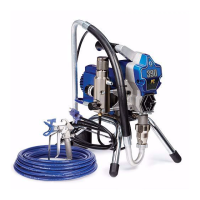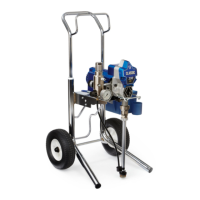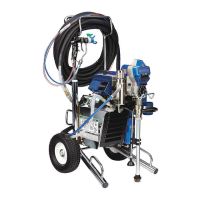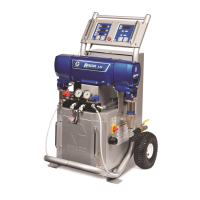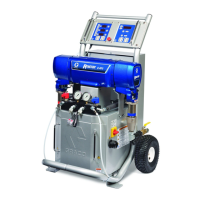308-088
Hold the gun perpendicular to the surface. Keep the gun
at an even 300-356 mm (12 to 14 in.) from the surface
you are spraying. See Fig 12.
Begin moving the gun horizontally at a steady rate. Start
the spray stroke off the target surface and pull the trigger
as the gun is moving. Then, while the gun is still moving,
and as you approach the other edge of the surface, reĆ
lease the trigger. This method avoids excess paint buildĆ
up at the end of each stroke.
Move the gun at a speed that provides a full, wet coating
to be applied without runs or sags. Lap each stroke 50%
over the previous stroke to produce a uniform paint thickĆ
ness. Spray in a uniform pattern from right to left and
then left to right for a professional finish. See Fig 13.
The best way to control the rate of coverage is with the
gun tip size. A small tip orifice applies less paint. A larger
tip orifice applies more paint. The width of the pattern deĆ
pends on the fan pattern of the tip you choose.
Do not try to increase coverage by increasing the fluid
pressure! Use the lowest pressure needed for good reĆ
sults. This prolongs the life of your sprayer and reduces
paint lost by overspray.
For interior corners aim the gun toward the center of the
corner to be sprayed. By dividing the spray pattern this
way, the edges on both sides are sprayed evenly. See
Fig 14.
If there is a wind, angle the spray pattern into the wind
to minimize drifting. Paint from the ground to the roof.
Shrubs.
Tie back shrubs with rope and stakes. Cover
them with a dropcloth as the painter approaches the
area. Remove the dropcloth as soon as the area is
painted to prevent damage.
Concrete walks.
If the walkways will be walked on, cover
them with a canvas dropcloth to avoid slipping. OtherĆ
wise a plastic cloth can be used.
Electrical outlets and lamps.
Protect electrical outlets
with masking tape. Cover lamps with plastic bags seĆ
cured with masking tape.
Nearby objects.
Move portable objects upwind of the
surface to be sprayed. If there is a nearby home, make
a protective barrier by hanging plastic drop cloths beĆ
tween two long poles.
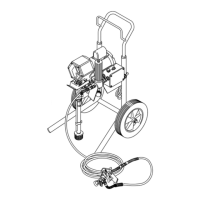
